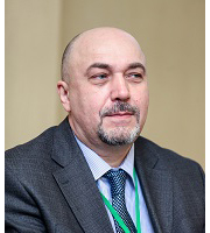Ru
|
Eng
Expert: Successful launch of a VVER 1200 reactor at the Novovoronezh nuclear power plant confirms Rosatom’s leadership in the international market
09.08.2016

On 5 August an innovative power-generating unit of the three-plus generation went online at the Novovoronezh nuclear power plant to produce 240MW of electricity for the Russian national power grid, BelTA learned from the press service of Rosenergoatom, Rosatom’s division in charge of operating all the Russian nuclear power plants. Before commercial operation the turbogenerator had to reach designed rotation parameters in idle running. Specialists carried out a large set of tests to verify the reactor’s capabilities, with various kinds of equipment being thoroughly examined — all the measures are meant to confirm the reliability and safety of the power-generating unit during its consequent operation.
The successful launch of the VVER 1200 3+ generation reactor at the Novovoronezh nuclear power plant is good news for Rosatom because it confirms the company’s supremacy on the international market, AO FINAM analyst Alexei Kalachev told media. Nuclear power plants that meet the IAEA’s increased safety requirements after the Fukushima accident are being built in the USA and France, too but the reactor at the Novovoronezh nuclear power plant can be demonstrated in action before potential customers, thus giving Rosatom a competitive advantage.
The South Korean APR 1400 reactor, which was commissioned as part of the third power-generating unit of the Shin Kori nuclear power plant, is more powerful but less safe. Unlike Rosatom’s design the Korean reactor lacks a core catcher.
In order to fully appreciate economic parameters of the project it would be a good idea to wait for the final cost. But it is already obvious that the VVER 1200 design boasts better effectiveness in comparison with previous generations. The factor can expedite its payback. It is also more effective thanks to the larger output capacity (1,1195.4MW) with a comparable active zone size, a lengthy term of service (up to 60 years), the ability to work for 18 months without fuel recharging, more complete “burnout” of fuel cells and other improved specific parameters.
ANALYTICS
30.08.2023
21.03.2023
30.08.2021
02.07.2021
23.06.2021
10.06.2021
04.06.2021
03.06.2021
20.05.2021
15.05.2021













